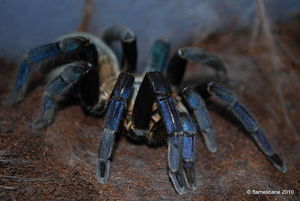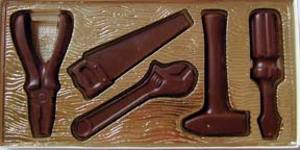When it comes to tarantulas, few species can compare in terms of color to the Cobalt Blue. Easily recognizable by it’s vibrant blue and silver/white coloring, the Cobalt Blue is among one of the most colorful varieties of tarantula and is a treasure pet among arachnid enthusiasts. However, just as this species is stunning to look at, is is also one of the most aggressive species, making it ideal for experienced handlers but not recommended to beginners in the hobby.
Cobalt Blue tarantulas are an Old World species of tarantula native to the tropical forests of Myanmar, Thailand, Laos, Cambodia, and Vietnam. This species reaches a mature leg span of roughly 5 inches and is extremely fast. Cobalt Blues are a terrestrial species, meaning they are burrowers in nature. Because of this, enclosures should be long rather than tall and should have an adequate amount of substrate for burrowing.
Cobalt Blues require their habitat to be hot and humid. The enclosure should be kept at a constant temperature of 80 to 90 degrees F with 78 to 82% humidity. Heat should be obtained through use of heating pads rather than lights, as bright light tends to hurt tarantulas eyes and will cause the tarantula to try to hide from it by living exclusively in its burrow. Peat moss is the ideal substrate for this species, as it retains humidity rather well.
Because of their aggressive nature, it is not recommended that you handle your Cobalt Blue tarantula unless you are highly experienced in owning tarantulas. If you do decide to handle your tarantula, do so in a small, enclosed area. This species is fast and can escape very quickly. When holding the tarantula, never hold it more than a few inches above the ground as even a short fall can result in death if the spider’s abdomen ruptures. Be aware that this species is known for biting if provoked. Unless you have an allergy to tarantula venom, their bite will not prove fatal, but it will cause severe pain and discomfort.
Like all tarantulas, Cobalt Blues molt in order to grow. If you notice your spider laying on its back: leave it alone as it is likely in the process of molting. Molting occurs when the spider literally sheds its old exoskeleton. After molting has occurred, it will appear as though there are “two” tarantulas in the enclosure; one you tarantula after molting, the other, the hollow exoskeleton from which the tarantula has just molted. After molting, your Cobalt Blue will look pale and soft. This is when tarantulas are at their most fragile, so refrain from touching or feeding your spider until its new exoskeleton has hardened.
Cobalt Blue tarantulas will feed on any invertebrate they can easily overpower. Crickets, locusts, meal worms and super worms will provide adequate nutrition for your new pet. Adult sized tarantulas only need to eat several adult crickets once per week in order to obtain adequate nutrition. A small, shallow water dish can be placed in the enclosure only if the spider has a leg span of three inches or more.
References:
http://www.petbugs.com/caresheets/H-lividum.html







